iPhone aloft!
Andrew Davidhazy
School of Photo Arts and Sciences/RIT
Andrew Davidhazy
School of Photo Arts and Sciences/RIT
Photography of difficult subjects is something that is a challenging undertaking and provides hours of problem solving fun. Whether a simple or a complex problem they all encourage creative thinking and improvisation and many paths to marginal or complete solutions.
One such challenge has been the making of photographs from the top of a sailboat's mast while the boat is underway. This is something that many photographers and sailors have solved in various ways, including me many years ago while sailing on a 13 foot sloop on Irondequoit Bay off Lake Ontario.
That was in the mid 1970s and the system consisted of attaching a 35 mm Single Lens Reflex camera to the top of the mast before the mast was raised into position. The camera was aligned on the mast so that it would be pointing it at the deck below. The camera was equipped with a radio controlled triggering mechanism and the triggering signal was sent from a transmitter I held in my hand while sailing in calm winds and also while heeled almost to the gunwales. The system worked well.
This year I came into a 20 foot sloop and decided to do the same thing but without the benefit of attaching the camera to the top of the mast before it was stepped. Raising and lowering the mast now was no longer a manual job and once a camera was added at the top it would have to stay there for the “duration”. This was not a practical solution.
In addition, my new objective was to use a phone camera instead of a sophisticated professional digital camera. On examining the iPhone with which I planned to make the photographs I noticed it did not have a means for attaching it to some support or fixture. It was, if course, lacking a standard tripod socket that is available on most normal cameras.
The iPhone was in a semi hard case and on opening the case it became apparent that there was a small space between the case material and the back of the iPhone. Not much of a space but some. It occurred to me that it would be possible to install a threaded device through that case and use it to affix the phone with a standard 1/4 x 20 threaded bolt to some other support.
“T” nuts are used to add a metallic thread to wooden objects and it was one of these that I modified to serve as the tripod socket for my camera. These “nuts” have either a smooth collar or one that has “claws” that are hammered into the wood to fasten them together. I chose the smooth kind.
 This nut was then
“thinned” or machined down so that only two threads
remained. The “nut” was very thin. Boring a hole into the back of the
case I pressed the nut through it until the smooth lip of the nut was
flush with the inner surface of the case. The nut easily passed under
the case halves when they were put back together leaving the threads
easily accessible.
This nut was then
“thinned” or machined down so that only two threads
remained. The “nut” was very thin. Boring a hole into the back of the
case I pressed the nut through it until the smooth lip of the nut was
flush with the inner surface of the case. The nut easily passed under
the case halves when they were put back together leaving the threads
easily accessible.Next taking care I did not go too far, and this is VERY important, I screwed an “eye bolt” to the threaded connection and tightened it down with a nut from above. In fact, you should probably do any attachment like this with the case empty and insert the phone into the case when it is firmy attached to the support, a bolt or tripod. You don't want to screw the supporting bolt or tripod bolt into the back of the phone (bad) or into the glass cover of the phone (REAL BAD!).
Following my own advice, once the bolt was attached to the case I installed the camera into the case but “upside down” so that the camera would be facing downwards while being hoisted by the bolt attached to its back up the mast with a spare halyard.
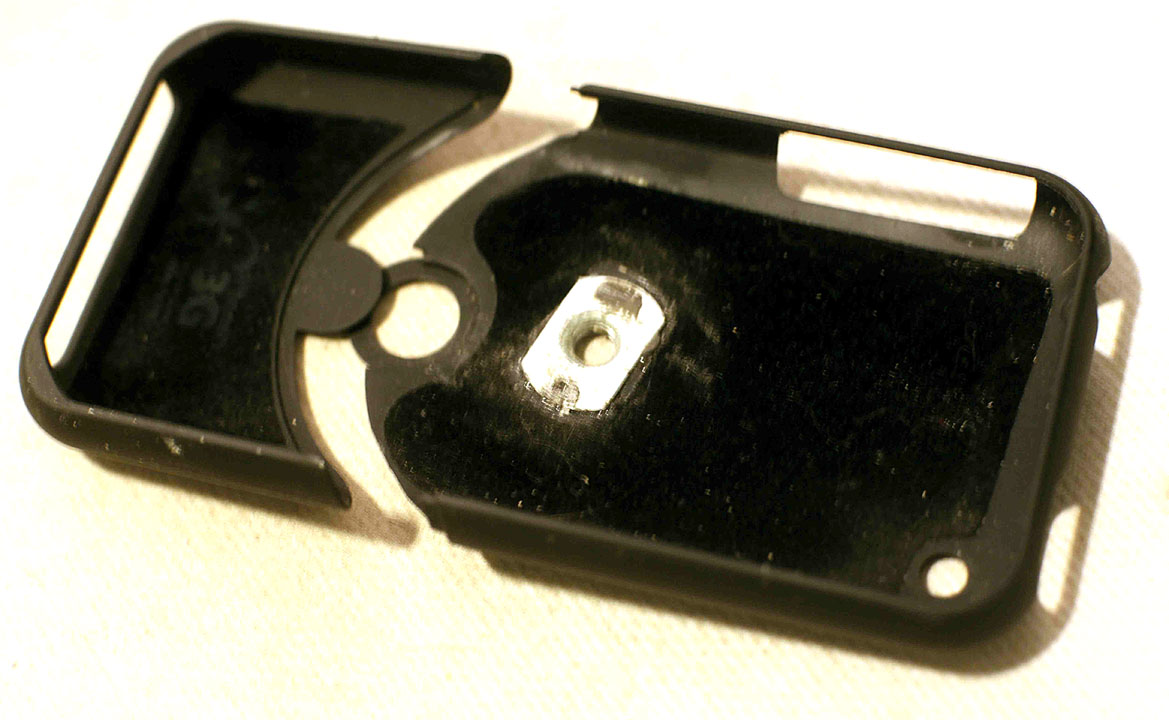
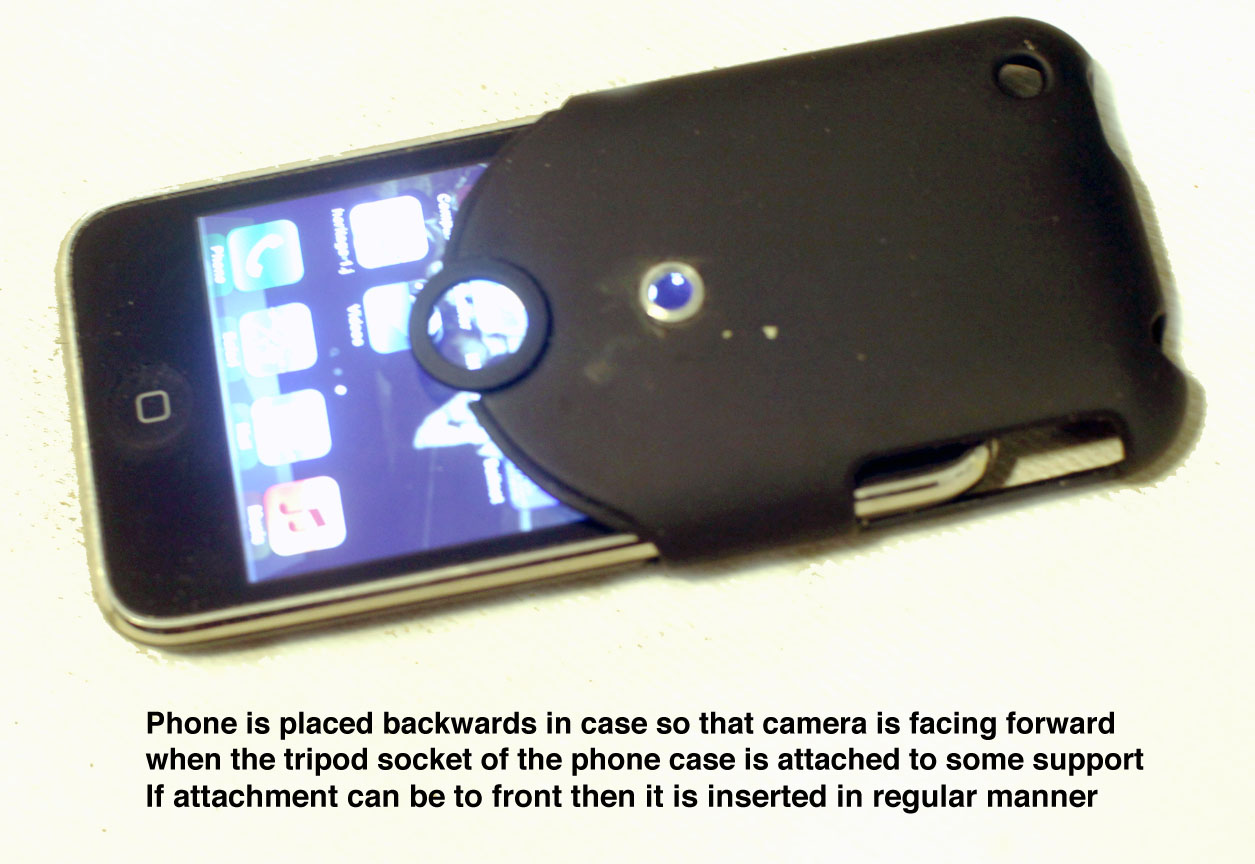
Once this was done the camera could be hoisted but to retrieve it it would have to be pulled down. For this the free end of the halyard was attached to the snap that the camera was attached to.

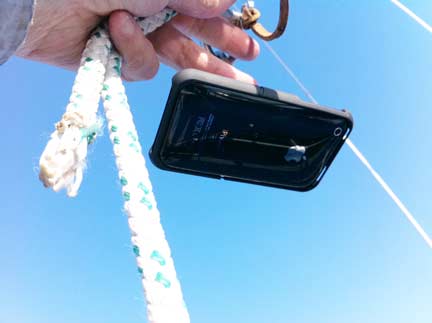
Once the sailboat was underway and the mainsail was raised the camera was lifted into position. The camera was set to video mode as there was no possibility for remote control of the camera. The expectation was that a video record would be probably even more “exciting” than a series of still images and that if stills were desired one could always extract frames from the video record.
After an hour or so so sailing the camera was lowered and the memory card downloaded to a computer where the recorded video could be experienced at leisure .. along with sound too. I made a brief video of the “view from the top” and posted it on Youtube.
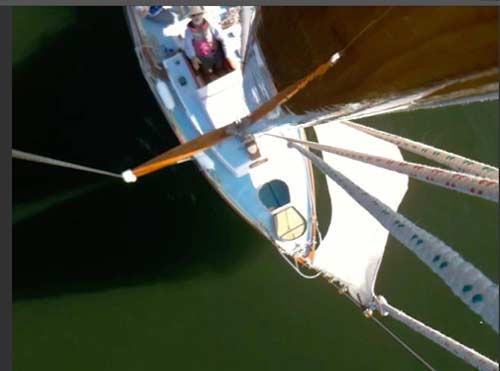
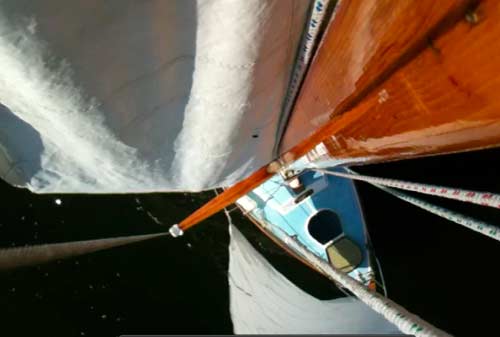
To discuss any part of this
project feel free to write to me Andrew Davidhazy at
andpph@davidhazy.org or at andpph@rit.edu